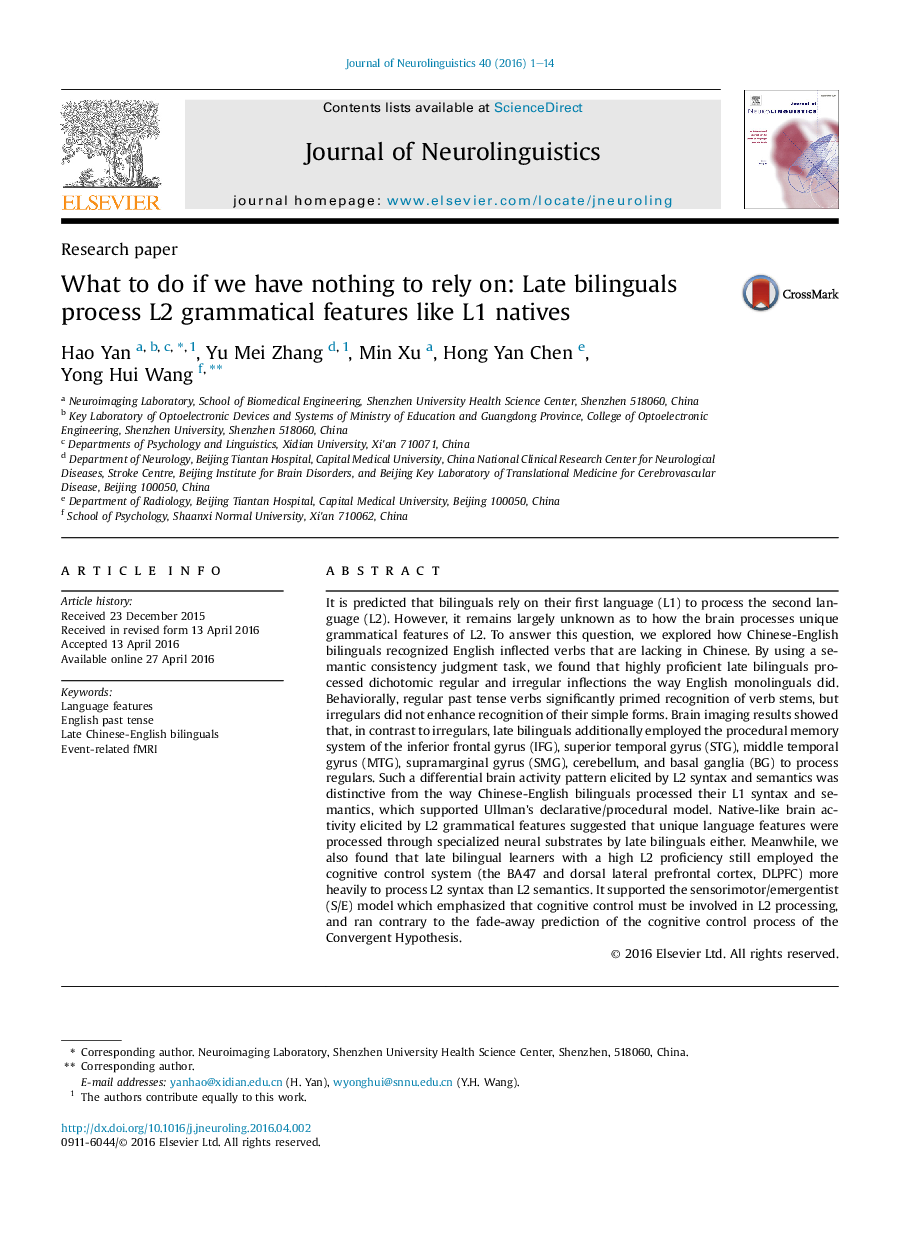| کد مقاله | کد نشریه | سال انتشار | مقاله انگلیسی | نسخه تمام متن |
|---|---|---|---|---|
| 911725 | 1473167 | 2016 | 14 صفحه PDF | دانلود رایگان |
• Late proficient bilinguals didn't rely on L1 to process L2-specific grammar.
• They processed L2 grammatical features in the way native speakers did.
• The results supported the D/P model, both generally and specifically.
• The cognitive control system was involved when late bilinguals processed L2 specific grammar.
It is predicted that bilinguals rely on their first language (L1) to process the second language (L2). However, it remains largely unknown as to how the brain processes unique grammatical features of L2. To answer this question, we explored how Chinese-English bilinguals recognized English inflected verbs that are lacking in Chinese. By using a semantic consistency judgment task, we found that highly proficient late bilinguals processed dichotomic regular and irregular inflections the way English monolinguals did. Behaviorally, regular past tense verbs significantly primed recognition of verb stems, but irregulars did not enhance recognition of their simple forms. Brain imaging results showed that, in contrast to irregulars, late bilinguals additionally employed the procedural memory system of the inferior frontal gyrus (IFG), superior temporal gyrus (STG), middle temporal gyrus (MTG), supramarginal gyrus (SMG), cerebellum, and basal ganglia (BG) to process regulars. Such a differential brain activity pattern elicited by L2 syntax and semantics was distinctive from the way Chinese-English bilinguals processed their L1 syntax and semantics, which supported Ullman's declarative/procedural model. Native-like brain activity elicited by L2 grammatical features suggested that unique language features were processed through specialized neural substrates by late bilinguals either. Meanwhile, we also found that late bilingual learners with a high L2 proficiency still employed the cognitive control system (the BA47 and dorsal lateral prefrontal cortex, DLPFC) more heavily to process L2 syntax than L2 semantics. It supported the sensorimotor/emergentist (S/E) model which emphasized that cognitive control must be involved in L2 processing, and ran contrary to the fade-away prediction of the cognitive control process of the Convergent Hypothesis.
Journal: Journal of Neurolinguistics - Volume 40, November 2016, Pages 1–14
